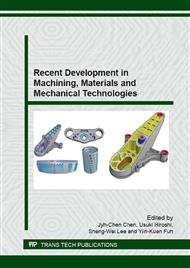p.719
p.725
p.729
p.735
p.741
p.747
p.755
p.761
p.768
Thermal Conduction Measurement and Analysis for a Spaceborn Sensor
Abstract:
The present study is aimed at investigating the thermal conduction characteristics of a spaceborn sensor experimentally and computationally. The experimental measurement has been carried out in a high vacuum chamber with twenty selected thermal couples attached to the sensor module. The detailed internal thermal control design, material for heat release, temperature limit, and control logic of the sensor assembly have been described in the study. The total thermal resistance for the sensor has been evaluated from the experimental results of the steady state temperature distributions under a heat power of 5.5 W and the sensor heater power modulation has been obtained to keep the PT1000 within the accepted temperature range. Under the assumed temperature boundary conditions, the measured thermal resistances and the modulated sensor heater power, the maximum PT1000 temperature distribution is found to be 25.26 °C ± 3.44 °C with the finite element analysis. Heat loss has been evaluated for the invar mount of the sensor module. In addition, the overall orbit peak and average heater powers needed are 4.61 W and 1.61 W respectively.
Info:
Periodical:
Pages:
741-746
Citation:
Online since:
July 2015
Authors:
Price:
Сopyright:
© 2015 Trans Tech Publications Ltd. All Rights Reserved
Share:
Citation:


